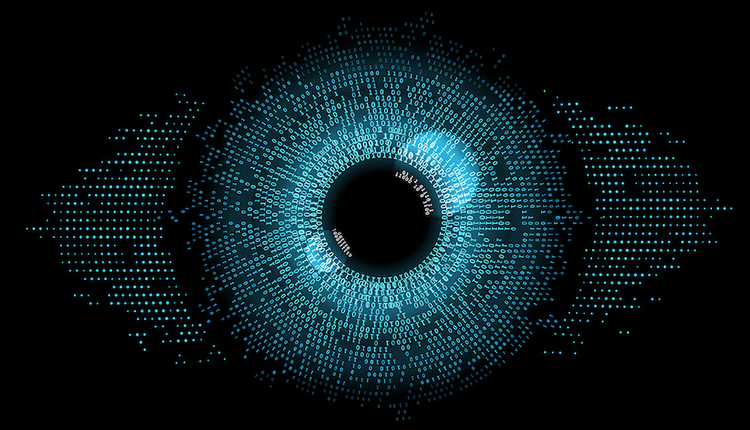» Note: For Part 1 of Mr. Gingrande's article, Click HERE.
Additional
complications
Because preservation efforts in the analog world conceive
the work as a physical artifact, archivists were forced to change their
thinking radically when it came to maintaining legal objects in digital form. The latter requires the archivist to see information not as a physical thing
but to perceive it instead as a disembodied collection of data. This concept,
unfortunately, does not square up with keeping the status of digital
information as evidence. Maintaining digital
evidence longevity entails more than keeping a true copy of a digital object
over time. The true copy also must retain its unaltered content in an unbroken
chain of custody that addresses data preservation and the accuracy,
reliability and durability of the hardware and software systems involved.
From a legal perspective,
meeting chain of custody requirements for a digital object is not any harder than,
say, meeting those for DNA or for a bullet collected at the scene of a crime. The
issue is one of certification rather than replication because ensuring the
chain of custody for digital content does not involve an additional act of
copying or physical transformation. It simply requires that any change in safeguarding
the digital object must be authenticated and recorded in order for it to be
introduced as evidence at a later date. However, this problem cannot be solved
by digital means alone. It requires activity outside the digital realm that documents
when a change of custody has taken place — or certifies it has not. This mandate
can make preserving digital evidence more difficult — but no more so than
preserving DNA or keeping a lethal bullet undisturbed in its original condition.
The micro-etching solution
Today there is at least one
high-tech answer to the problem of preserving digital evidence. Ironically, it
requires converting the original digital content into an analog one and then
storing that version forever. The solution involves micro-etching, a technology
exclusively licensed by Norsam Technologies after it was adapted by Los Alamos
Labs from gallium-ion beam micro-circuitry FIB machines to that of etching text
and analog items. The Labs specifically developed micro-etching technology in
order to store data for the federal government's nuclear waste storage
program that had a congressional mandate of 10,000 years and had to be
impervious to the electromagnetic effects of nuclear weapons.
Norsam uses their micro-etching techniques to manufacture a high-density archival product called HD Rosetta that can store over 100,000 pages of analog objects — and their digital renditions - from microfilm, original documents or other media onto a 2.8" metal Permafilm disk out of which low-cost distribution copies can be made. The final analog output is human-eye readable but, since it is etched on a molecular scale using ion-beam technology, it requires a specialized viewer to read. The micro-etching solution ultimately saves a lot of time, labor and money by eliminating the need for digital refreshing, migration or emulation and the risks associated with those preservation activities.
In a way, HD-Rosetta constitutes
the ultimate "blue-collar solution" solution because, in a way, it is simply a
variant of ordinary printing in which raster images are republished on a
molecular scale using ion-beam transfer technology. The selection of metal — platinum,
iridium, etc. — determines durability. Including a digital rendition of the
analog content turns the Permafilm disk into a modern-day Rosetta Stone. A
thousand years from today, if there were no viewer available, an electron
microscope could be used to view the data, and the availability of the binary
code would provide a means for digital translation and replication.
When tested at times up to 65 hours, the disks exhibited little
or no degradation for temperatures up to 300o C (570o
F). If they were stored in an inert gas atmosphere, it is expected
that they would resist degradation at temperatures above 300o
C (570o F). Results of exposure and electrochemical tests indicate
that the Permafilm disc had a high resistance to corrosion in saltwater, tap
water and marine air. After 15 weeks of exposure, no pitting was observed for
any of the environments, and the text appeared virtually pristine.
To date, the Norsam alternative seems to be the best solution
to the problem of digital longevity, but in its role as evidence, certain additional
mechanisms would still be required to ensure that a proper chain of custody
prevailed over a disk's statutory lifetime. Chain of custody issues, however,
have long been worked out by the courts. For example, locking up a Permafilm disk
in a state-of-the-art bank vault could provide an ironclad answer to the
problem. Micro-etching technology still is a bit pricey, so it is not suitable for
all interested parties. But for now, it provides a conceptual, if not always
affordable, solution to the problem of ensuring the longevity of digital evidence.
 |
ARTHUR GINGRANDE is a partner of IMERGE Consulting in Lexington, MA and nationally
recognized expert in ICR, forms processing and document automation. He is also
a practicing attorney who specializes in electronic discovery, regulatory
compliance and intellectual property law. For more information, visit www.imergeconsult.com or email gingrande@gmail.com.











